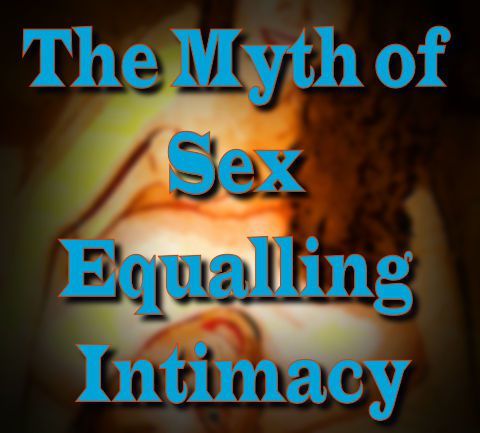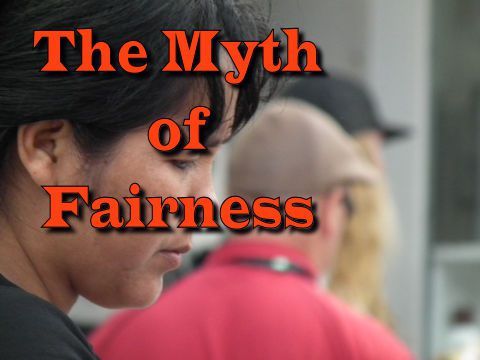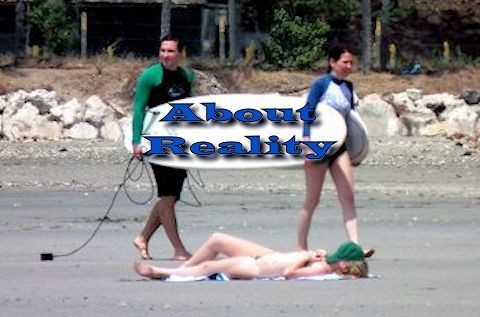Wayne C. Allen's Blog, page 30
October 2, 2016
The Myth of Shoulds
This is post 6 of 6 in the series “The Myths Series”
Synopsis:The Myth of “Shoulds” — “shoulds” are declarations of opinion projected on others
Of Wayne’s many books, the one closest to today’s topic is: This Endless Moment

“Shoulds” are the personalization of something that we declare to be an absolute. In other words, a “should” is a statement that some truth is self-evident, and “should” therefore be followed.
We’ve talked about the myth of absolutes, so stating that something is “self-evidently and absolutely true” is already on shaky ground. As we’ve said, what is true for me is not “self-evidently true” for you.
The person invested in declaring “shoulds” moves from, “This is “true” for me” to this is “true for everyone.” From there, they self-righteously declare: “I should,” or “You should.”
They emphasize how “obvious” the “should” is. Even though, as we all know, nothing is obvious — and there’s not a hell of a lot that is self-evident, or even evident.
It doesn’t matter how craftily you word a “should” — it’s all the same nonsense.
Now, some people are clever enough to drop the word “should.” They’ll try something like: “If you love me, you’d agree with me.” Others lamely point to authorities, declaring, “I just read a book and took a course, and I absolutely know for sure what you need to do.”
It’s no better when you say, “You should understand me.” All of which begs the question, “Why should (must I) I be interested in understanding you? Maybe you’re boring or just full of yourself.”

I love watching kids grow up. And part of growing up is discovering that being an adult means moving farther away from their parents’ perceptions and ways of doing things. This process involves exploring, challenging, and shifting core beliefs.
However, most teens do the normal, teen thing. They replace their parents’ structures and ways of doing things with those of their peer group.
One teen and I were talking about sex and dating, and as we dug in, she said “I can’t talk to my parents about this stuff.” I asked her what she did do. “I ask my friends,” was her reply.
Now, I hear that and I do wonder: “What could another 15-year-old possibly know about that or any other adult topic?” But I held my tongue and offered to listen and answer the questions she chose to ask.
All teens do this little dance of trading one fervently held view for another equally rigid belief. I just hope each of them gets over thinking there is a “right” answer, or that there is something they “should” be doing.
Odds are, though, most won’t. Not without help. Unfortunately, most folk simply shift from one set of rigid beliefs to another as they try to find the “correct list” — the perfect list of “shoulds” — without ever questioning the premise, “Why do I think I (or others) should do anything?” (More on right and wrong next week.)
We don’t ask this question because we believe in “shoulds.”
As kids, we hear stuff like, “You should be ashamed of yourself.” Parents do this to us to get us to fit in to their preconceived notions of how we “should” behave. The only thing we really learn is that big people think that there is a universal list of “shoulds” that coincidentally matches what those big people already believe.
Much of relationship distress is a direct result of having a “should list” about how a “husband” or “wife” or partner (or ex!) ought to be behaving. They grasp onto this list as if it is real, as opposed to a construction of their imagination and perhaps a creation of our culture. Then, in their ignorance and audacity, they compare their partner to this list, find them lacking, and try to force or manipulate them to change.
All of this happens because we give more power to an imagined list than to the person standing right there in front of us.
What getting over ourselves and our need to control others gains us is a better understanding of what’s actually happening. If I can’t relate with someone, it’s not because they are violating my list of “shoulds.” I don’t like the way they are behaving … wait for it … because I don’t like the way they are behaving.
That’s not to say that people don’t screw up. It’s about whether I think I have the right to attempt to impose my “shoulds” on another.
So, say I’m in a highly functional relationship, and I bump my nose against what my partner is doing. As I consider the issue, but before raising it, I would take the time to listen to what I am hurting myself over — to what I am “objecting to,” and I would ask myself, “Do I think there is some way my partner “should” be behaving that I can let go of?”
If I truly believe that raising the issue would benefit the relationship, I might then say, “Here is what I am noticing that you are doing, and here is what I make of it.” This is not a request for change. This is a statement of my observations, which others can take or leave.
In this highly functional relationship, you and I would have an understanding that when one of us comments in this decidedly neutral way, the recipient will respond by looking at what they are doing. That “you” will not simply dismiss what I am saying as being “my issue.” In other words, my comments would lead you to look at yourself.
And this would happen in both directions, obviously.
The point of commenting is to create an environment of exploration for both parties. It is not to get the other person to follow one mode of being (one list of “shoulds.”) Thus, we may agree on using a communication model, not from compulsion (we “should,”) but from a place of agreement about the value of clear and direct communication.
Choosing this way is self-responsible and self-directed.
Comparing a person to an abstraction and then trying to get the person to change to fit the abstraction simply does not work.
When I see, over time, that what I want and what I am getting does not match, I have three choices,
I can accept the difference without complaint, and simply be curious, or
I can whine, manipulate and try to control the person into “changing,” “seeing the light,” “waking up,” “getting it,” “reading the right book” — and make life miserable for them until they do, or
I can leave. And by this I mean actually leave — many people leave, and continue to try to manipulate their ex into “behaving” — all for the “right” reasons, of course!
The middle option is, by far, the most common. My favourite, direct from the mouths of clients: “I’ll treat you with respect when you stop drinking.” “I’ll stop drinking when you treat me with respect.” Both are indignantly superior in their “rightness,” their, “everyone knows how you should be behaving-ness.”
And, of course, nothing changes.
This week, notice your “shoulds,” your “Gee, your life would be better if only you would change to make me happy” list. Notice your, “I just don’t get why you don’t change. It’s self-evident” comments. Find your own place. Stop. Breathe. Look at your options. Then, work toward choice 1 or choice 3.
div.wpob_template_main.wpob_template_main_1{display:none;}
.wpob_template_main_1{background-color:#fff;max-width:750px;height:310px;border-width:7px;border-color:#ccc;margin-top:;margin-bottom:;margin-left:;margin-right:;}.wpob_template_main_1 .wpob_box_heading{background-color:#8f0a0b;}.wpob_template_main_1 .wpob_box_heading_text{font-family:'Shadows Into Light',serif;font-size:24px;line-height:40px;color:#fff;text-align:center;text-transform:uppercase;font-weight:900;margin:0;}.wpob_template_main_1 .wpob_box_media_container{display:inline-block;width:120px;height:164px;}.wpob_template_main_1 .wpob_box_content_container{}.wpob_template_main_1 input.wpob_input_fields{width:200px;line-height:36px;margin-bottom:5px;border:1px #ddd solid;vertical-align:middle;font-size:16px;color:#999;font-size:Arial;padding:0px 8px;}.wpob_template_main_1 .wpob_box_image{width:100%;height:100%;}.wpob_template_main_1 .wpob_box_media_center{display:block;margin:0 auto;padding:10px;}.wpob_template_main_1 .wpob_box_media_right{float:right;padding:10px 0px 10px 20px;}.wpob_template_main_1 .wpob_box_media_left{float:left;padding:10px 20px 10px 0px;}.wpob_template_main_1 .wpob_box_content{font-family:Fjalla One;font-size:18px;line-height:24px;color:#333;text-align:center;padding:1em;}.wpob_template_main_1 .wpob_box_button_div{text-align:center;padding:0em 1em 1em 1em;}.wpob_template_main_1 .wpob_box_button_div a.wpob_box_button,.wpob_template_main_1 .wpob_box_button_div button.wpob_box_button{font-family:Georgia;font-size:18px;color:#fff;background-color:#0c8442;border-radius:5px;width:;padding:10px 15px;}.wpob_button_gradient{background-image:-moz-linear-gradient(top,#0c8442,#057538);background-image:-ms-linear-gradient(top,#0c8442,#057538);background-image:-webkit-gradient(linear,#0c8442,#057538);background-image:-webkit-linear-gradient(top,#0c8442,#057538);background-image:-o-linear-gradient(top,#0c8442,#057538);background-image:linear-gradient(top,#0c8442,#057538);filter:progid:DXImageTransform.Microsoft.gradient(startColorstr="#0c8442",endColorstr="#057538",GradientType=0);border-color:+#0c8442 #057538 #057538;background-color:#0c8442;}
A Shameless Bribe!!

Receive The Pathless Path by e-mail!
As a thank-you, we'll send you a link to our pdf booklet, Exercises in Consciousness.
What could be better than that??
Cick and Join Us!
The post The Myth of Shoulds appeared first on The Pathless Path.
Original article: The Myth of Shoulds. If you're reading this on another site, let me know...
September 25, 2016
The Myth of Altruism
This is post 5 of 5 in the series “The Myths Series”
synopsis: The Myth of Altruism — it’s actually pretty hard to find a selfless act
Of Wayne’s many books, the one closest to today’s topic is: This Endless Moment

Examples abound about the idea of altruism. Let’s first define the word:
The question arises: is it possible to commit a truly selfless act? I suspect that it is so, but it happens rarely.
Regard for others, both natural and moral; devotion to the interests of others; brotherly kindness — opposed to egoism or selfishness. – : Webster’s Revised Unabridged Dictionary, ? 1996, 1998 MICRA, Inc.
“Nonsense!” people scream. “Day in and day out I make sacrifices for my (parents, spouse, kids, customers, employer, employees). The real question is, why don’t they ever appreciate my sacrifices?”
As we listen, we are supposed to nod knowingly, and think or say, “What a saint! Look at all (s)he puts up with. And doesn’t even get a thank-you, let alone payback.”
Which then requires us to ask, if payback was expected, how could the act be altruistic?
Altruism might also be defined as “an action without thought of reward.” Our first Australian Shepherd was named Nishka, short for Nishkamakarma, which means, “Do your duty, with faith in”god,” without attachment to the fruit of the action.” Altruism.
Let’s get real and look at how life generally is:
Most people have not been taught to stand up and go for what they need. Most people do not even know how to ask for what they need.
Other people, when they ask, expect 100% compliance. If they get rejected by their parents, spouse, kids, customers, employer, employees, they simply stop asking and start manipulating. As opposed to asking someone else, or meeting their own needs.
What the majority call altruism is actually manipulation. It’s acting or speaking in a certain way, in order to get what we want or to get a reward.
As usual, our parents teach us how to do this.
“When you behave like that, you make mommy sad.” I’ve actually heard parents use this line, as opposed to, “If you do that again, here is the consequence,” and then applying it.
The first approach teaches the child that their goal in life should be to “make mommy happy.” To which I ask the question, “Why the hell should I or anyone else care if you choose to make yourself unhappy? Besides, no one can make you feel!”
Most folk, however, have heard variations on this theme since they were hatched, and actually believe they have the power to affect another’s feelings. From there, it’s a short leap to, “It’s my duty to make others happy.”
Suggest an article topic you would like to read about.
If you would like a reply, include your email address.
Parents utter this line for only one reason — they want to stop a certain behaviour. They, as children, were taught to look to their parents for cues about what pleased them; if they were wise, they then did the pleasing behaviour. Interestingly, most children comply not out of a fear of consequences, but because they were trained to avoid displeasing.
Paradoxically, we learn from this to manipulate others through our behaviour. If I behave a certain way, mommy will love me and smile at me. And vice versa. So, if I want something from mommy, I’ll do all the things she likes, and then she will owe me what I want.
I did what she wants; she’ll have to do what I want.
Initially, when we are small, this often is how it works. You’re sulking, daddy says “lighten up,” and you do, and we gives you a treat. Except, by the time we get to be teens, it seldom works that way.
We do something that’s supposed guarantee that good old dad will be obligated to give us the car keys, and he doesn’t. Then we scream that dad’s not being fair. (See myth # 2) We either try again, (and again, and again) or declare dad to be hopeless. We decide to find a spouse to manipulate instead. Or we have a kid, and play the same game with their heads that were played with ours.
Phony altruistic acts are done in the name of love, yet are methods to manipulate others into doing what they aren’t doing, or don’t want to do.
I had a client who grew up with parents that criticized everything about her. Her looks, clothes, choices, all were judged to be lacking. They continued to do this all through her sessions. She wanted her mom and dad to love her, so she kept telling them all she accomplished, hoping for praise. She never got what she was looking for.
She had a 19-year-old son, who got by, by the skin of his teeth. She considered him irresponsible. One time, she heard a rumor that his college course was going to start early. She told me how she’d called the college, found out it was true, made several calls to the school and to her parents to find the money, and got everything sorted out for her son.
She was beaming as she told me what she had done. I asked her if she could explain to me how doing all of that helped her son to be more responsible. She said, “I really resent you for pointing that out to me.” I congratulated her for being honest. I also said that her resentment was not going to cause me any loss of sleep. My job was not to get her to like me.
After some thought, she admitted that she had been looking for praise from me, and what she wanted praise for was for being a good mother (better than her mother.) She realized, however, that by acting as she had, and by then letting her son know how she’d bailed out his chestnuts again, she was saying, “See. You can’t get along without me!”
This was exactly the opposite of her avowed purpose of getting him out on his own, standing on his own two feet. Her action, far from altruistic, was a manipulative rescue, meant to keep her son in his place as an incompetent.
Most “altruistic acts” are exactly like this.
True altruism is not a bargain of the “I’ll do this so that you do that” sort. If I do the laundry, fold the clothes and put them away, that could be construed as an altruistic act. If I say to Dar, “I did the laundry (again) and put away the clothes (your clothes, again)” there is nothing altruistic about it. I’m either trying to make her feel guilty, or I’m sucking up for a compliment. If the former, I want her to have guilt, so she’ll do something for me. If the latter, I’m trying to manipulate her into saying something nice that (I judge, without asking her) she wouldn’t say otherwise.
The alternative to all of this is being aware of myself.
It’s being totally honest. So, in the above example, I might say, “I notice, Dar, that I’m about to point out to you that I did the laundry. I want you to feel guilty and tell me what a wonderful person I am, so that I can feel good about myself. Rather than be manipulative in this way, I’d like to skip the laundry speech and ask if you’d mind cutting to the chase and simply telling me I’m wonderful.”
Knowing Dar, she’d likely say, “Sure. Wayne, you’re wonderful. Now, get over yourself.” And I’d laugh.
This week, ask for what you want, directly. If you are refused, ask the person if they know why they are refusing, and whether they’d be willing to dialog doing something else. If the people you are in relationship with continually refuse your direct, non-manipulative requests, ask yourself why you are in relationship with them.
This week, notice when you are trying to manipulate people into doing what you want — by lying, misdirection, false complements or endless criticism. Ask yourself why you need to play this game. Stop being a martyr, just for an hour or so. Stop feeling sorry for yourself for an afternoon. Stop whining about how awful the world is for a whole day. Ask yourself why you have set your life up to be like this. (Who’d you think set it up???) Tell a few people about the games you play, about your insecurities, about the manipulations that you give in to attempting. Then vow to stop yourself.
Go where you need to go to get what you want. Do what you need to do for you, not to make someone else happy. Give up on “I’ll wash your back if you wash mine.” Wash. Don’t wash. Because you choose to, not for what you hope you’ll get. (You’ll be disappointed. Even if you get it, you’ll know it was coerced, not freely given.)
This week, get over yourself.
div.wpob_template_main.wpob_template_main_1{display:none;}
.wpob_template_main_1{background-color:#fff;max-width:750px;height:310px;border-width:7px;border-color:#ccc;margin-top:;margin-bottom:;margin-left:;margin-right:;}.wpob_template_main_1 .wpob_box_heading{background-color:#8f0a0b;}.wpob_template_main_1 .wpob_box_heading_text{font-family:'Shadows Into Light',serif;font-size:24px;line-height:40px;color:#fff;text-align:center;text-transform:uppercase;font-weight:900;margin:0;}.wpob_template_main_1 .wpob_box_media_container{display:inline-block;width:120px;height:164px;}.wpob_template_main_1 .wpob_box_content_container{}.wpob_template_main_1 input.wpob_input_fields{width:200px;line-height:36px;margin-bottom:5px;border:1px #ddd solid;vertical-align:middle;font-size:16px;color:#999;font-size:Arial;padding:0px 8px;}.wpob_template_main_1 .wpob_box_image{width:100%;height:100%;}.wpob_template_main_1 .wpob_box_media_center{display:block;margin:0 auto;padding:10px;}.wpob_template_main_1 .wpob_box_media_right{float:right;padding:10px 0px 10px 20px;}.wpob_template_main_1 .wpob_box_media_left{float:left;padding:10px 20px 10px 0px;}.wpob_template_main_1 .wpob_box_content{font-family:Fjalla One;font-size:18px;line-height:24px;color:#333;text-align:center;padding:1em;}.wpob_template_main_1 .wpob_box_button_div{text-align:center;padding:0em 1em 1em 1em;}.wpob_template_main_1 .wpob_box_button_div a.wpob_box_button,.wpob_template_main_1 .wpob_box_button_div button.wpob_box_button{font-family:Georgia;font-size:18px;color:#fff;background-color:#0c8442;border-radius:5px;width:;padding:10px 15px;}.wpob_button_gradient{background-image:-moz-linear-gradient(top,#0c8442,#057538);background-image:-ms-linear-gradient(top,#0c8442,#057538);background-image:-webkit-gradient(linear,#0c8442,#057538);background-image:-webkit-linear-gradient(top,#0c8442,#057538);background-image:-o-linear-gradient(top,#0c8442,#057538);background-image:linear-gradient(top,#0c8442,#057538);filter:progid:DXImageTransform.Microsoft.gradient(startColorstr="#0c8442",endColorstr="#057538",GradientType=0);border-color:+#0c8442 #057538 #057538;background-color:#0c8442;}
A Shameless Bribe!!

Receive The Pathless Path by e-mail!
As a thank-you, we'll send you a link to our pdf booklet, Exercises in Consciousness.
What could be better than that??
Cick and Join Us!
The post The Myth of Altruism appeared first on The Pathless Path.
Original article: The Myth of Altruism. If you're reading this on another site, let me know...
September 11, 2016
The Myth of Absolute Truth
This is post 4 of 4 in the series “The Myths Series”
Synopsis: The Myth of Absolute Truth — we hate not knowing, but the reality is, most of life is a mystery to be lived, not a puzzle to be solved.
Of Wayne’s many books, the one closest to today’s topic is: This Endless Moment

Einstein made his significant discoveries by the time he was in his early 30’s.
From that point on, he spent his time frustrating himself trying to discover what is called the “Unified Field Theory.” To quote Compton’s On-Line Encyclopaedia,
In their work some physicists have tried to construct a unified field theory that would describe all fundamental forces in nature and the relationships between elementary particles in terms of a single theory. So far, all such attempts have failed, though experiments and tests of several hypotheses are still under investigation. Gravity has not yet been accounted for in a unified field theory … In physics, forces can be described by fields that mediate interactions between separate objects, such as between planets or between electrons…in the early 20th century, Albert Einstein developed general relativity, his field theory of gravitation. Einstein and others later unsuccessfully attempted to construct a unified field theory in which electromagnetism and gravity would emerge as different aspects of a single fundamental field.
Loose Ends — when the pieces won’t fit
Human beings hate loose ends — those unsolvable moments that actually surround us. our hatred of the unknown or unsolvable is almost pathological.
As infants, we were told how to view things. This conditioning is necessary, as we need explanations for… well… everything. Of course, we don’t realize that we are not being given “the truth.” We are being given one version of many.
But parents are big, and tribes are powerful — the message comes across that there is only one way to see things — and “coincidentally” it’s the way our parents, tribe and educational system see things.
For many people, this restrictive view of the universe, faith, life-perspective — never changes.

Now, some will argue that there is change during adolescence. Adolescents are notorious for thinking that their opinions are totally unique. This is, of course, crap. Adolescence is nothing more than a time for trading one “herd” for another. For example, when I look at photos of myself from University in the late 60s, I certainly looked different from my parents. But I perfectly blended in with my peers.
For most, the main thing is “belonging” and to belong is to accept the “Absolute Truth” of the group to which one belongs.
We play the absolute truth game so that we don’t scare ourselves with how unpredictable life is. We don’t want to think about how “different” each of our world-views are — going there, doing that, and your head might explode. We desperately want “people” to “get it.” The “it” we want them to “get,” is how we see the world.
Many people continually frustrate themselves over how stupid other people are.
Being in Costa Rica is a great demonstration. Many are the expats down here who bemoan the “Tico way.” I do this every time I repair something plugged into the electrical grid. Back home in Canada, I “wire to code” — a euphemism for following the rules. Here, wires poke out of drywall, are taped together, no boxes, etc. I want to fix it all, and then I calm down and just put things back the way they were, only working.
But others loudly proclaim how slow and backward things and people are. I just laugh and remind them that “You ain’t in Kansas any more.”
This also plays out in “field dependency. (FD)”
FD is defined as continually monitoring “the field,” and then adapting one’s self and one’s view to that “field” — to the people around us. It’s what we’re describing above, under adolescence, but broader. It’s captured in the line, “What would people think?” The FD person will move mountains to fit in, even if what they are choosing to do flies in the face of who they are.
So, we end up going off in two directions at once.
We attempt to become the people we choose to relate to while at the same time we attempt to create universal rules that others “should” abide by, never noticing that those rules “just happen” to be what we already believe to be so. The stronger the latter belief, the more arrogant the person becomes. And the more closed.
The solution to this “myth” is to “get over yourself.” The getting over involves letting go of thinking that there is a “Unified Field Theory of Behaviour.” If there is one, it is this: “Everything is changing and nothing is true.”
Here’s a long quote from Brad Blanton, author of Radical Honesty, on this topic: (pg. 239f)
How Things Are
None of us are ever really looking at how it is out there. I have my view of “how things are.” You have your view of “how things are.” We have to depend, in case of disagreement, on another nut like ourselves (a friend, therapist, or judge) with some other view of “how things are” to arbitrate for us. And it’s no accident that “arbitrate” comes form the same root word arbitrary. The truth is, none of us ever know what is going on. We just agree to have beliefs in common as a way of keeping things together. It’s amazing how we copy each other’s views so well that we can have such organized living. It’s pretty amazing how groups of us are willing to defend to the death our interpretations against other groups’ interpretations, or punish “crooked” interpretations within our own groups. It’s amazing because there is really no way to tell if “out there” is out there or not. But whatever it is, it’s all created by individual beings, who then get together and agree what to call it. Assuming that seeing, hearing, smelling and so on are chemical reactions in organisms, then each individual organism, as I argued in Chapter One, is the creator of the world. We have to see if our creations agree with each other by doing a lot of cross-checking in the course of growing up. Even then, just at the perceptual level, it’s hard to get agreement among people about what the world really is and what it is like. Science is a formal attempt to agree on the criteria we are willing to accept as a basis of agreement, in advance of any agreements. In that way the laws and agreed-upon assumptions of science are just like the laws and agreed-upon assumptions of the U.S. Constitution. We humans have spent a lot of time and energy for the past several thousand years trying to get clear on our agreements about perception and our agreements about value.
People kill each other by the minute over what it all means. The solution probably won’t ever be just having everyone believe the same thing. Instead of working toward commonality of views, we need to work toward common acceptance of the principle of variety. We need a variety of ways to look at how things are, because ultimately we have a better chance of supporting each other with a lot of ways of viewing things. It may feel less secure than if everyone agrees on what is true, but feeling of security is just that – a feeling, not the real thing. Less secure is often more reliable. If there is not enough variety preserved in the gardens of illusion about “how things are,” then some version of 1984 totalitarianism will come true. This scenario is almost as bad as the more tragic one of being blown away or dying of poison. I think communal acceptance of variety of illusions, with less murderous defence of belief, is a better solution.
Blanton’s book was published in 1994. Those last few lines, about totalitarianism, so perfectly fit with the rise of The Donald. He’s doing what we’re talking about: providing simple, facile arguments about reality (Mexicans, Arabs, women, etc.) that some people are desperate to swallow — in order to feel a part of “the in group” they feel excluded from. Diversity of thought scares the shit out of many of his followers.
Please note that I am not declaring Blanton’s view “true,” (nor am I declaring the prior paragraph “true…”)
His idea fits well with The Pathless Path. He invites us to question everything, to recognize that our “answers” are provisional, and that anything and everything is in a state of flux. And that this includes everything that we believe to be “absolute.”
With each of the myths in this series, I’m trying to get you to stretch your mind enough so that you’ll simply let go — that you’ll notice how your beliefs, and your beliefs alone, have the power to keep you stuck. I have faith that “answers,” such as they are, often reside in the body — at the level of perception of experience.
That I experience something is significant. Why I experience something as I do is a head game with no helpful outcome. Such head “answers” change all the time, if we are honest, and absolutely do not tell you anything about anyone else. My thoughts about others are all about me.
Notice your absolutes. You’ll find them by listening for “everyone” or “no one.” Beyond “everyone is born and dies,” (and other biological absolutes) there is nothing “everyone or no one” does. Social consensus is simply that. We used to be into slavery, remember?
When it comes to behaviour, anything and everything is possible. The only authentic question is, “is this behaviour accomplishing something I want to accomplish?”
It’s scary, and it’s the way it is… nonetheless.
div.wpob_template_main.wpob_template_main_1{display:none;}
.wpob_template_main_1{background-color:#fff;max-width:750px;height:310px;border-width:7px;border-color:#ccc;margin-top:;margin-bottom:;margin-left:;margin-right:;}.wpob_template_main_1 .wpob_box_heading{background-color:#8f0a0b;}.wpob_template_main_1 .wpob_box_heading_text{font-family:'Shadows Into Light',serif;font-size:24px;line-height:40px;color:#fff;text-align:center;text-transform:uppercase;font-weight:900;margin:0;}.wpob_template_main_1 .wpob_box_media_container{display:inline-block;width:120px;height:164px;}.wpob_template_main_1 .wpob_box_content_container{}.wpob_template_main_1 input.wpob_input_fields{width:200px;line-height:36px;margin-bottom:5px;border:1px #ddd solid;vertical-align:middle;font-size:16px;color:#999;font-size:Arial;padding:0px 8px;}.wpob_template_main_1 .wpob_box_image{width:100%;height:100%;}.wpob_template_main_1 .wpob_box_media_center{display:block;margin:0 auto;padding:10px;}.wpob_template_main_1 .wpob_box_media_right{float:right;padding:10px 0px 10px 20px;}.wpob_template_main_1 .wpob_box_media_left{float:left;padding:10px 20px 10px 0px;}.wpob_template_main_1 .wpob_box_content{font-family:Fjalla One;font-size:18px;line-height:24px;color:#333;text-align:center;padding:1em;}.wpob_template_main_1 .wpob_box_button_div{text-align:center;padding:0em 1em 1em 1em;}.wpob_template_main_1 .wpob_box_button_div a.wpob_box_button,.wpob_template_main_1 .wpob_box_button_div button.wpob_box_button{font-family:Georgia;font-size:18px;color:#fff;background-color:#0c8442;border-radius:5px;width:;padding:10px 15px;}.wpob_button_gradient{background-image:-moz-linear-gradient(top,#0c8442,#057538);background-image:-ms-linear-gradient(top,#0c8442,#057538);background-image:-webkit-gradient(linear,#0c8442,#057538);background-image:-webkit-linear-gradient(top,#0c8442,#057538);background-image:-o-linear-gradient(top,#0c8442,#057538);background-image:linear-gradient(top,#0c8442,#057538);filter:progid:DXImageTransform.Microsoft.gradient(startColorstr="#0c8442",endColorstr="#057538",GradientType=0);border-color:+#0c8442 #057538 #057538;background-color:#0c8442;}
A Shameless Bribe!!

Receive The Pathless Path by e-mail!
As a thank-you, we'll send you a link to our pdf booklet, Exercises in Consciousness.
What could be better than that??
Cick and Join Us!
The post The Myth of Absolute Truth appeared first on The Pathless Path.
Original article: The Myth of Absolute Truth. If you're reading this on another site, let me know...
September 4, 2016
The Myth of Sex Equalling Intimacy
This is post 3 of 3 in the series “The Myths Series”
Synopsis: The Myth of Sex Equalling Intimacy–Intimacy is an act of continual stripping away — of revealing who we are, with total honesty.
Of Wayne’s many books, the one closest to today’s topic is: The. Best. Relationship. Ever.

Intimacy, it seems to me, is something that many people say they are seeking, at least in the abstract.
Intimacy is not solely about dialogue nor using the Communication Model. It’s not about long walks or shared interests. It’s not about raising kids together and contributing to the running of the household. Intimacy may contain all or many of the above, but intimacy is about, first and foremost, vulnerability and trust.
Intimacy – is about openness, honesty and vulnerability.
In my book, The. Best. Relationship. Ever. I wrote:
Confusing sex with intimacy
In my book This Endless Moment, I wrote about a woman who broke off her engagement because she’d had sex (on a pool table!) with a friend. She talked about how hot and chargy it was.
I asked her why she’d broken off her engagement.
“I can’t stay with my fiancé, because I must love [pool table guy] a lot! After all, I had great sex with him!”
I said, “Or you just got really horny, and had good sex. It was just sex.”
She: “Oh no! I’d never have sex with someone just because he turns me on. I only have sex with people I love, and I must love him a lot, given how good the sex was.”
Enough said? The problem is not having sex with a friend on a pool table. The problem comes from not being willing to admit that having sex is fun, in and of itself.
“I had sex with him/her, it must be love!” is idiocy. Unfortunately, it’s really prevalent. And that’s because we have such a hard time accepting ourselves as sexual beings.
It’s so weird. People have such trouble saying. “I’m horny, and love to have sex!” This coyness around matters sexual originates in our fear of being “seen” as sexual. Most people are afraid to declare their sexual side, for fear of being judged as “perverse.”
• True intimacy (being seen) encompasses sexuality, but is not equal to it.
• Sexuality is an intimate act – true intimacy is so much more.
• True intimacy is the act of becoming open, honest, and vulnerable.
• True intimacy is the activity of sharing deeply and with verve.
• Most couples have sex, while never achieving true intimacy.
Because of our embarrassment over our sexual nature, we quickly mislabel sexual charge as ‘love’
Sex is not equivalent to romance or love, and yet romance and love often contain, or provide a container for, our sexuality.
Sexuality is a simple and very basic part of our being. It is what it is, and nothing more.
Intimacy, on the other hand, is the ability (to use the language of The Haven in BC) to be open, honest, and vulnerable.
Openness is the willingness to shine a light on me. If I am open, I am willing to be clear about all aspects of myself.
Honesty is just what it sounds like. It means telling the truth as opposed to half-truths, manipulations, or even “little white lies.”
Vulnerability adds to this: I am even willing to admit to the scary, strange, weird, nasty, manipulative parts. I am willing to tell you how I hurt myself. I am willing to risk it because this is what true dialogue, communication and relationship require.
This is scary stuff for most, so other things intrude:
Many moons ago there were series of TV commercials in Canada, from Star Choice, a satellite TV company. In one commercial, a man and a woman are sitting on a couch. The woman turns to the man and says something like, “Tell me about how you are really feeling about our relationship.”
The guy looks like he’s having his prostate checked. The announcer walks on screen and says, “This disaster could have been avoided, if only he had gotten Star Choice TV.” We then see the couple sitting next to each other, staring blissfully at the TV screen. There’s a romance playing, the woman is teary eyed and smiling, and they guy is also smiling and looking altogether too clever by half. Moral: watching satellite TV averts a disaster – the very scary intimate communication.
Leading me to an off ramp on the highway of today’s Myth.
There’s a great book called Radical Honesty, by Brad Blanton. His theory, and I would concur, is that living in our head and spending all our time “thinking” is something to be escaped from, as our head lies, all the time. Of course, this is also Buddhism 101.
He describes how we tell others lies about our past, our present, our thinking, about whom we are and what we know. Blanton calls lying “bullshit,” and prescribes total honesty as a cure. This core of honesty leads to a feeling of nakedness before others. When I am vulnerable I am placing myself naked before another, by choice, in order to be seen and known.
This requires trust. Trust is about having faith that the person I am being vulnerable with will not attempt to take advantage of me.
As I tell my partner something, I trust that they will treat my revelation with dignity and respect. They will not try to hurt me with what I’ve said, call me names, nor use what I’ve shared as a weapon. They will never try to control me, or the relationship. They want to be with me as I am, and that “as I am” grows with each revelation. As I develop more and more trust, I learn to be more and more open and vulnerable.
Contrast that to most relationships.
Most couples, when they reach an impasse, fight by dredging up something the partner said in a moment of vulnerability. This is designed to hurt, to wound – not to resolve whatever issue the couple first disagreed about. This flinging back and forth of vulnerabilities naturally leads to less and less intimacy.
Another favourite avoidance tack taken buy couples is:
“I’ve been hurt in the past (either by you or by someone else,) so I won’t risk being completely open with you. You’ll have to wait for intimacy.”
Excuses abound over why intimacy will take a long time. And often there’s some expectation that, first, the other person “should” fix whatever happened in the past.
Most of this comes from our upbringing, naturally, as we’ve been saying throughout this myth series. Parents often cut off the sharing of emotions. Babies who scream or cry are rocked or fed. Children and teens are punished / disciplined / or talked out of emotional outbursts. Seldom do parents have the skills to teach their kids how to communicate elegantly… obviously, they can’t do it with each other, so how can they model it for their kids?
And it gets even worse when something goes wrong for the kid / teen. I had a 17-year-old client. Her parents, like most, had told her repeatedly, “You can tell us anything. We won’t get mad. We’ll just help you sort it out.” So, she took them up on it, and had told them that she’d become sexually active.
All hell broke loose. Yelling. Both parents name-calling. Dad even slapped her. The parents (who know me from working with them previously) sent her to me to “sort out.” During our session, she cried, a lot. I helped her get that, and no little anger, out.
Then, I said, “Tell me about your experience. That’s a big moment!” She did, with relief, pride, awe and a bit of fear. Too bad mom and dad had chosen not to experience all of that with her, by communicating instead of browbeating.
Needless to say, the 17-year-old learned a lesson about the dangers of being honest, open and vulnerable, but hopefully also learned from our conversation what intimate dialogue could be like.
Sadly, though, most adults have precious little experience with full-blown intimacy.
It takes work to trust, to risk, to open, and it takes acceptance, because it’s not always going to work out. And few have had it modeled, so that’s a problem too.
So, many people substitute sex for intimacy, without even noticing.
We were taught to be modest — to think that being naked is an intimate act. (Beginning to see the connection?) So, we hide ourselves (behind clothes) and resist the pull to be seen. (Of course, I’m also talking about intimate communication here…)
I suspect that most people have a “young adolescence” attitude about sex–sort of a leftover from the first 2 years of puberty. Back then, sex was something joked about, whispered about. Kids teaching kids.
Adults sense the need for closeness and intimacy — we want to be intimate, to share who we are, at the core of us. But we lack the skill-set to do so… and often the best we can do is to have sex while being embarrassed about our bodies. This is a left-over from adolescence (for many of us) and our first sexual encounters.
 Do you wanna?
Do you wanna?Remember being blown away by the intensity? Our minds go, “Wow. That was so… so… special!!! I came, (s)he came, and (s)he treated me as if I was… special!!! I must be in love! That was so… so… intimate! S(he) saw all of me, liked me, loved me!!! (S)he must be… oh!!!… my… soul mate!”
Well, phooey. Sex is a marker, an indicator, in and of itself, of exactly nothing.
Having sex is simply a way to find out whether or not you’ll let your body experience pleasure. It only seems to be “special” because sex, our bodies and passionate horizontal encounters are so so pleasurable, and much easier than communicating intimately:
“I want to be close to someone without having to open up to them, to be honest. I know! I’ve been told that being naked and having sex with someone is special… and I’m sure that I’d only do it with someone special! This must mean we’re in an intimate relationship!!!”
This is what happened for pool table girl.
I tried, oh how I tried to get her to talk about sex, relationships, and communication. After all, she’d condemned her fiancé for doing the same things she did. All she could keep saying was, “He did it for sex, I did it for love.” So sex-shy was she that she was reluctant to discuss how much she enjoyed it. She ended up leaving her fiancé, and therapy, because “You just don’t understand about true love!”
After a while, though, people get browned off when they wake up one day and realize that sex doesn’t produce intimacy.
But because it’s the only item in most couple’s intimacy bag of tricks, (since they don’t have deep and meaningful conversations, and thus vulnerability and openness and trust aren’t happening) people feel cheated. But remember: they decided, long ago, that sex should equal intimacy, so they run off and screw someone else. And miss that they’re really screwing themselves.
Intimacy has little or nothing to do with sex
Intimacy is an act of continual stripping away — of revealing who we are, with total honesty. There can be no element of one person trying to control the other, no holding back, no blaming. Intimacy is an ongoing process or deep communication, not an isolated, single act.
Sex, on the other hand, is a great way to let someone know you find them attractive and, practiced as “safer sex,” is simply fun. And rarely, when sex is combined with intimate relating, the result transcends both intimacy and sexuality and becomes a sacred act.
If you’re trying to use sex to find intimacy, you’ll most likely fail. If you refuse to be fully, deeply, vulnerably, out-of-control intimate with your partner, sex will never be what it could be. It will either become a weapon, boring, or non-existent. If you think that fidelity means your relationship is solid, think again.
In the end, intimacy produces the energy of life. Sex, in and of itself, is simply an activity. Combined with true, honest intimacy, it’s a symphony. At its best it’s experienced nakedly and openly – without shame.
div.wpob_template_main.wpob_template_main_1{display: none;}
.wpob_template_main_1{
background-color: #fff;
max-width: 750px;
height: 310px;
border-width: 7px;
border-color: #ccc;
margin-top: ;
margin-bottom: ;
margin-left: ;
margin-right: ;
}
.wpob_template_main_1 .wpob_box_heading{
background-color: #8f0a0b;
}
.wpob_template_main_1 .wpob_box_heading_text{
font-family: 'Shadows Into Light', serif;
font-size: 24px;
line-height: 40px;
color: #fff;
text-align: center;
text-transform: uppercase;
font-weight: 900;
margin: 0;
}
.wpob_template_main_1 .wpob_box_media_container{
display: inline-block;
width: 120px;
height: 164px;
}
.wpob_template_main_1 .wpob_box_content_container{
}
.wpob_template_main_1 input.wpob_input_fields{
width: 200px;
line-height: 36px;
margin-bottom: 5px;
border: 1px #ddd solid;
vertical-align: middle;
font-size: 16px;
color: #999;
font-size: Arial;
padding: 0px 8px;
}
.wpob_template_main_1 .wpob_box_image{
width: 100%;
height: 100%;
}
.wpob_template_main_1 .wpob_box_media_center{
display: block;
margin: 0 auto;
padding: 10px;
}
.wpob_template_main_1 .wpob_box_media_right{
float: right;
padding: 10px 0px 10px 20px;
}
.wpob_template_main_1 .wpob_box_media_left{
float: left;
padding: 10px 20px 10px 0px;
}
.wpob_template_main_1 .wpob_box_content{
font-family: Fjalla One;
font-size: 18px;
line-height: 24px;
color: #333;
text-align: center;
padding: 1em;
}
.wpob_template_main_1 .wpob_box_button_div{
text-align: center;
padding: 0em 1em 1em 1em;
}
.wpob_template_main_1 .wpob_box_button_div a.wpob_box_button, .wpob_template_main_1 .wpob_box_button_div button.wpob_box_button{
font-family: Georgia;
font-size: 18px;
color: #fff;
background-color: #0c8442;
border-radius: 5px;
width: ;
padding: 10px 15px;
}
.wpob_button_gradient{background-image : -moz-linear-gradient(top, #0c8442, #057538);background-image : -ms-linear-gradient(top, #0c8442, #057538);background-image : -webkit-gradient(linear, #0c8442, #057538);background-image : -webkit-linear-gradient(top, #0c8442, #057538);background-image : -o-linear-gradient(top, #0c8442, #057538);background-image : linear-gradient(top, #0c8442, #057538);filter : progid:DXImageTransform.Microsoft.gradient(startColorstr="#0c8442", endColorstr="#057538", GradientType=0);border-color : +#0c8442 #057538 #057538;background-color : #0c8442;}
A Shameless Bribe!!

Receive The Pathless Path by e-mail!
As a thank-you, we'll send you a link to our pdf booklet, Exercises in Consciousness.
What could be better than that??
Cick and Join Us!
The post The Myth of Sex Equalling Intimacy appeared first on The Pathless Path.
Original article: The Myth of Sex Equalling Intimacy. If you're reading this on another site, let me know...








 Related StoriesThe Joys of Eroticism – Intimacy ProjectsThe Joys of Eroticism — Intimacy ProjectsThe Myth of No Consequences
Related StoriesThe Joys of Eroticism – Intimacy ProjectsThe Joys of Eroticism — Intimacy ProjectsThe Myth of No Consequences
August 30, 2016
The Myth of No Consequences
This is post 2 of 2 in the series “The Myths Series”
Synopsis: The Myth of No Consequences — the consequence, or result, is caused by the actions preceding it, 100% of the time
Of Wayne’s many books, the one closest to today’s topic is: This Endless Moment

In Buddhism, there is endless talk about the myth of independent origin. Usually, it’s put the other way around: the reality of dependent origin.
Briefly, one of the marks of Buddhism is its insistence on the inter-relatedness of all things. This means that no matter how unique and “singular” an event seems, it is tied into a long string of other things.
Here’s a Soto Zen Gatha that expresses this (especially in the first paragraph)
First, seventy-two labors brought us this food,
We should know how it comes to us.
Second, as we receive this offering,
We should consider
Whether our virtue and practice deserve it.
Third, as we desire the natural order of mind,
To be free from clinging,
We must be free from greed.
Fourth, to support our life, we receive this food.
Fifth, to realize the way, we accept this food.
First, this food is for the Three Treasures.
Second, it is for our teachers, parents, nation,
And all sentient beings.
Third, it is for all beings in the six worlds.
Thus, we eat this food with everyone.
We eat to stop all evil, to practice good,
To save all sentient beings,
And to accomplish our Buddha Way.
OK, so here’s the kicker. The idea of dependent origin also applies to each of us.
We are not unique, nor self-sufficient. We are the result of a long train of genetics and choices. The events of our life have formed us, much as a potter forms a pot on a wheel. It is what it is made; it has no independent being.
What this actually means is that we are the consequence of our choices.
Let us consider the lump of clay that is a newborn. The child is a genetic amalgam of both parents, who each are an amalgam, and back and back to when we climbed down from the trees.
Infants are hard-wired, for example, to nurse — to “latch on.” Many are the instinctual behaviours. Some brain scientists would argue that mood and temperament are equally hard-wired in — our baseline view of the world, for example.
The rest is learned.
Our parents and tribes set us on a path; we — little bundles of “no-nothing” autism — are given structure, explanations, and examples. Each of these things is dictated by our culture (i.e. most of us eat what our culture or religion eats — we didn’t choose this — we absorbed it.)
Then, there are the quirks of our parents.
From within the allowable parameters of each child’s culture, parents have the freedom to tilt us in particular (peculiar) directions. They promote certain aspects of our arising personalities, and block others (or at least try to.) Because this structuring is happening to us from infancy on, we tend to believe the story we are told, and at some level, become the people our parents want us to be.
So, what about no consequences?
When we are children, consequences are typically expressed in the form of punishments. “You hit your sister, you’re having a time out!”
I once, age 3 and at the chiropractor’s, wouldn’t stop acting up. I think I did an entire vaudeville routine. Mom, non-violent mom, warned me that there would be consequences if I didn’t stop. I didn’t. We got home, and I met the wooden spoon. Consequences.
Where this went off the rails for me is here: I never really “got” that my behaviour led to the application of the wooden spoon. I got it intellectually, but never got past the “It’s not fair!” response.
To repeat:
We learned a skewed view of consequences as kids, when we found out about punishments. We’d break something and get sent to our room. Most kids have trouble thinking, “Gee, I broke that, and this is a fair consequence.” No, we come up with, “It’s not my fault. I didn’t know better.” Or, we go to: “They don’t love / appreciate me.”
And then, because something else will always happen, we learn to lie. We blame others. “I didn’t do it, Tommy did!”
If no one else is around, we’re limited to “It wasn’t me!” or “It was an accident. I shouldn’t have to pay the price of an accident!”
Kids hate consequences. And most kids never grow up.
Despite the wooden spoon, my upbringing was positive; I would now say overly-positive. My mom especially would intervene so I wouldn’t fail. As a result, I got all the way to University thinking I could do any dumb thing, and somehow, magically, I’d get what I wanted.
And then, because mommy wasn’t there, I started experiencing consequences. I handed in a paper late, I got a bad grade. And low and behold, my profs didn’t care if I was “supposed to” get a good grade.
I slowly started to figure out the connection between “this” and “that.” And I do mean slowly. This “endless learning” thing is another thing that does not set well with “modern” people. So it becomes a compound problem — the game is a game of a lifetime, and where you are and who you are is about where you’ve been and what you’ve done.
Back in my counselling days, I briefly worked with a guy who was the spouse of a long-term client. He came in twice. He also had a PhD, which says something — I’m not sure what.
I never had time to learn how he developed his world-view, because, two sessions. But his was very much the life of Peter Pan — the boy who never grew up. He fervently believed that Never-never Land was real — that he was destined for greatness, bliss, endless great sex, and no issues — and all of this would happen with no effort on his part. All of this would happen no matter what he did.
He loudly declared that he knew for a fact that relationships were easy. All you had to do was meet the right person and there would be no problems, great sex and nothing to resolve.
I tried to help him to understand that his beliefs and behaviours were the cause of his dilemmas, but he couldn’t see it. He really believed in Never-land. We briefly decided to talk about marriage and sex, as this was really on his mind.
He was in his 50s when I saw him, and was baffled that his vision of “how things should be” did not match with “how things are.” He told me that he wasn’t happy in his marriage with my client, because “her” issues kept arising and “bad things kept happening.” Oh. And the sex was mediocre at best.
His marriage to my client was his fourth marriage, and he’d had several relationships on the side during all of them, and had yet to find “Ms. Perfect.” I again tried the, “It is your beliefs that have led you to this place,” but he wasn’t buying it. Who he was and where he was was not his responsibility — he had no responsibility. All the women he chose and lived with mysteriously ended up to be somehow “wrong.” Peter Pan-like, he left therapy, and left Canada to search the world for “the perfect woman, which will mean no consequences, no hassle.”
It’s all so easy — be a kid, look around, find someone to blame, and to ignore where you are “now.” Yet doing so means remaining forever a kid. Act, get lousy results, and just keep doing that, because that’s what you do. Figure everyone ought to cut you some slack, because “That’s who I am.” Because, of course, you are where you are by magic, or you got dragged where you are by others. “It’s not my fault!!”
Or, you can see the wisdom of dependent origin, the wisdom of consequences (my choice — my behaviour — led to this, and this leads to this…) Still confused? Let me simplify:
The consequences of your behaviour are simple to discover. The consequence of your behaviour is your life.

What consequences?
Yet it’s oh so easy to justify ourselves to ourselves, to believe anything about ourselves, and to completely miss how we, and we alone, get ourselves into the messes we find ourselves in.
We get all dewy-eyed when we begin… whatever… and congratulate ourselves for what we have (single-handedly and perfectly, of course!) set in motion. Then, as time goes by and the novelty wears off, and the inevitable difficulties arise, well, that’s the fault of others.
Some years ago two drunk University students climbed over a fence at the top of a mountain on their campus, this being the University of Colorado. They went down the hill on a toboggan, despite prominent warning signs. The fence itself was 8 feet high. They crashed into a tree; one was killed the other became a quadriplegic. The survivor sued. She won. 8 million or so. Reason? The University didn’t do “everything possible” to stop her. I wonder if she expected machine gun turrets?
See, to me, here’s a couple of adults, making choices, disregarding warnings, because, hey, everyone knows they have rights!!!!! They have the right to a drunken slide down a mountain on a toboggan. How dare the University put up signs and fences. Don’t they know they’re adults, wise in the ways of the world?
Well, spare me from the self-declared wise. They usually can’t find their ass with both hands and a map.
Then, crash. “Hey! Wait a minute! I didn’t know better. I’m just a kid. I shouldn’t be paralysed. It’s your fault. You should have stopped me, posted a guard, tackled me and dragged me, kicking and screaming (so I could sue you for dragging me, touching me, something) from the hill.
In other words, I have unlimited freedom of action, and absolutely no responsibility when I screw up.
And our world condones this crap.
Every choice, every action, has consequences. They are your consequences, created when you chose and/or acted. The state of your job, your relationships (all of them) your health — all of it is a consequence of your choices. No exemptions, no excuses.
And if you want to scream, “It’s not fair!” see last week’s issue.
div.wpob_template_main.wpob_template_main_1{display:none;}
.wpob_template_main_1{background-color:#fff;max-width:750px;height:310px;border-width:7px;border-color:#ccc;margin-top:;margin-bottom:;margin-left:;margin-right:;}.wpob_template_main_1 .wpob_box_heading{background-color:#8f0a0b;}.wpob_template_main_1 .wpob_box_heading_text{font-family:'Shadows Into Light',serif;font-size:24px;line-height:40px;color:#fff;text-align:center;text-transform:uppercase;font-weight:900;margin:0;}.wpob_template_main_1 .wpob_box_media_container{display:inline-block;width:120px;height:164px;}.wpob_template_main_1 .wpob_box_content_container{}.wpob_template_main_1 input.wpob_input_fields{width:200px;line-height:36px;margin-bottom:5px;border:1px #ddd solid;vertical-align:middle;font-size:16px;color:#999;font-size:Arial;padding:0px 8px;}.wpob_template_main_1 .wpob_box_image{width:100%;height:100%;}.wpob_template_main_1 .wpob_box_media_center{display:block;margin:0 auto;padding:10px;}.wpob_template_main_1 .wpob_box_media_right{float:right;padding:10px 0px 10px 20px;}.wpob_template_main_1 .wpob_box_media_left{float:left;padding:10px 20px 10px 0px;}.wpob_template_main_1 .wpob_box_content{font-family:Fjalla One;font-size:18px;line-height:24px;color:#333;text-align:center;padding:1em;}.wpob_template_main_1 .wpob_box_button_div{text-align:center;padding:0em 1em 1em 1em;}.wpob_template_main_1 .wpob_box_button_div a.wpob_box_button,.wpob_template_main_1 .wpob_box_button_div button.wpob_box_button{font-family:Georgia;font-size:18px;color:#fff;background-color:#0c8442;border-radius:5px;width:;padding:10px 15px;}.wpob_button_gradient{background-image:-moz-linear-gradient(top,#0c8442,#057538);background-image:-ms-linear-gradient(top,#0c8442,#057538);background-image:-webkit-gradient(linear,#0c8442,#057538);background-image:-webkit-linear-gradient(top,#0c8442,#057538);background-image:-o-linear-gradient(top,#0c8442,#057538);background-image:linear-gradient(top,#0c8442,#057538);filter:progid:DXImageTransform.Microsoft.gradient(startColorstr="#0c8442",endColorstr="#057538",GradientType=0);border-color:+#0c8442 #057538 #057538;background-color:#0c8442;}
A Shameless Bribe!!

Receive The Pathless Path by e-mail!
As a thank-you, we'll send you a link to our pdf booklet, Exercises in Consciousness.
What could be better than that??
Cick and Join Us!
The post The Myth of No Consequences appeared first on The Pathless Path.
Original article: The Myth of No Consequences. If you're reading this on another site, let me know...
August 22, 2016
The Myth of Fairness
This is post 1 of 1 in the series “The Myths Series”
Synopsis: The Myth of Fairness–getting over thinking life should be fair is, for some, a life-long task.
Of Wayne’s many books, the one closest to today’s topic is: This Endless Moment

“Hey! Wait a Minute! That’s not fair!”
If you hang around kids long enough, or if you ever were one ;-), you’ll remember hearing or speaking that phrase. When those words are uttered, it’s pretty clear that the speaker thinks that “something hasn’t worked out like it was supposed to.”
A rule, the speaker thinks, clearly has been violated.
Because of the squabbles that result over fairness, parents are known to devise elaborate ploys to preserve the illusion of fairness. For example, Darbella remembers this gambit regarding sharing: while growing up with her sister. Whenever dessert was divided between them, one got to do the cutting, and the other person got to choose “which piece” first. Dar describes how carefully the cutter would measure and cut, lest they give the other the “unfair” advantage of getting 1% more pie.
Because of course, everyone knows that life (and pie sharing) is supposed to be perfectly fair and absolutely equal.

Aren’t I Just so special?
A long time ago I counselled a teen; she I one of three kids. She declared–often and loudly–that her father loved her sister best, her mother loved her brother best, and that meant that she was left out of being “loved” best by a parent… and… wait for it… that wasn’t fair!!! More on this one later.
So, all of this talk of fairness makes sense when we’re talking about the hurt feelings of little kids. We do what we can to soothe them, and put in time until they grow up.
Because “fair, not fair” – is how a child thinks. At the same time, we, as adults, know that concepts such as fairness do not actually function in the real world.
Where this gets a little odd is when adults spout “fairness” as a valid model for life. Back when I was counselling, I got a call from another psychotherapist who worked in the same town. Apparently the Employee Assistance Plan we both got client referrals from had referred the same client to both of us. We were unaware of this.
He called her and made an appointment, then I called, and he was able to book with me sooner, so he did. He arrived at my office, we did a session, and at the end of the session he told me what had happened. I suggested he see the other person, since he’d booked with her first, but he decided to continue to see me.
Not a perfect scenario, but not the end of the world, either.
Anyway, he called the other therapist and cancelled his first session with her, explaining what had happened. She was not pleased. So, she called to find out why I’d seen the guy.
I said, “He called me and we booked an appointment. During his session, he mentioned he booked one with you. I suggested he see you instead of me, but he chose to continue to see me.”
She sputtered, “But . . . but … that’s not fair!” I managed not to spray coffee out my nose. I said, “Hmm.” She said, “Well, at least the insurance company admitted they were wrong for referring him to both of us, and are going to pay me for the cancelled session.” I said, “Um hmm.”
She paused, she waited. I said nothing. Unsatisfied that I hadn’t made the world fair for her, she rung off.
I was mostly confused as to how a therapist hadn’t figured out that the world isn’t fair.
On the other side of the “fairness” coin, friends of ours successfully brought their kids up not to expect fairness. I remember one story when Dar, who taught with the mom, drove her and her daughter to the kid’s daycare, drop off the daughter and then carry on to school. The mom buckled the kid into the back seat, and climbed into the front. The kid pouted and wailed, “I thought you’d sit back here with me.” The mom said she’d chosen to sit up front. The kid went, “That’s not fair!” Mom replied, “Well, life is shit and then you die.” The kid cried, “I know!!!!” Clearly the kid had heard that bit of wisdom before.
What’s important about that story is that, from an early age (the kid was 3 at the time) she was learning not to expect people to treat her as being special. While she is “special” as in “a unique being,” she is not “special” as in “more important that others.”
Here’s the key. When people scream, “That’s not fair!” they don’t want fairness, as in equality. They want special treatment.
Back to the teen. She felt like the “odd man out”–no parent loved her best. So, what’s she really looking for? Well, on one level she was saying, “Parents should love all their children the same.” Parents do, of course, spout that nonsense to their kids, to stop them from fighting over, “Mommy loves you best!” but parents don’t love their children the same. They relate to each child as they perceive the kid to be–the parents’ way of dealing with each kid is the result of their own thoughts, compassion and prejudices.
What the teen really meant, and later admitted, was, “I want my parents to love me most. I don’t want to share their love with my younger siblings. I had them to myself for the year before my brother was born, and I still want their total devotion and attention.”
This helps us to unpack what “fair” means for most people and in most situations.

I’m so special I have awards!
Fair means, “I want to be treated as special, never have anything go wrong and always get my way. I want my needs considered before and above everyone else’s. I want all sickness, war, poverty and pestilence to stop, at least as it affects me, and I want it to stop now! My parents should be perfect, my partner perfect, my kids perfect. What I mean by perfect is that they act like I want them to, never get sick or die on me, and always strive to keep me happy. Anything less just isn’t fair.”
Such thinking makes sense for a three-year-old who wants mommy in the back seat. It is a tad lame coming from a teen wanting to be an only child. It is pathetic coming from an adult who expects deferential, preferential treatment and then whines because “life is shit and then you die.”
Doesn’t matter what your justification, nor how you put it. “My husband works all the time and won’t help with the kids. I need time for myself and he’s not pulling his weight.” Message? “It’s not fair.”
“We’re supposed to be co-parenting, and he keeps disagreeing with me, when all I want is what’s best for the kids!” Message? “It’s not fair… he should do it my way.”
Have a look at your “fairness list.” Write it out and notice how hard-done-by you feel. Then, give yourself a shake, burn the list and decide what you’re going to do to get over the need to have more, to get your way, to be protected from life, and to be treated as special.
It won’t work, because you’re not.
div.wpob_template_main.wpob_template_main_1{display: none;}
.wpob_template_main_1{
background-color: #fff;
max-width: 750px;
height: 310px;
border-width: 7px;
border-color: #ccc;
margin-top: ;
margin-bottom: ;
margin-left: ;
margin-right: ;
}
.wpob_template_main_1 .wpob_box_heading{
background-color: #8f0a0b;
}
.wpob_template_main_1 .wpob_box_heading_text{
font-family: 'Shadows Into Light', serif;
font-size: 24px;
line-height: 40px;
color: #fff;
text-align: center;
text-transform: uppercase;
font-weight: 900;
margin: 0;
}
.wpob_template_main_1 .wpob_box_media_container{
display: inline-block;
width: 120px;
height: 164px;
}
.wpob_template_main_1 .wpob_box_content_container{
}
.wpob_template_main_1 input.wpob_input_fields{
width: 200px;
line-height: 36px;
margin-bottom: 5px;
border: 1px #ddd solid;
vertical-align: middle;
font-size: 16px;
color: #999;
font-size: Arial;
padding: 0px 8px;
}
.wpob_template_main_1 .wpob_box_image{
width: 100%;
height: 100%;
}
.wpob_template_main_1 .wpob_box_media_center{
display: block;
margin: 0 auto;
padding: 10px;
}
.wpob_template_main_1 .wpob_box_media_right{
float: right;
padding: 10px 0px 10px 20px;
}
.wpob_template_main_1 .wpob_box_media_left{
float: left;
padding: 10px 20px 10px 0px;
}
.wpob_template_main_1 .wpob_box_content{
font-family: Fjalla One;
font-size: 18px;
line-height: 24px;
color: #333;
text-align: center;
padding: 1em;
}
.wpob_template_main_1 .wpob_box_button_div{
text-align: center;
padding: 0em 1em 1em 1em;
}
.wpob_template_main_1 .wpob_box_button_div a.wpob_box_button, .wpob_template_main_1 .wpob_box_button_div button.wpob_box_button{
font-family: Georgia;
font-size: 18px;
color: #fff;
background-color: #0c8442;
border-radius: 5px;
width: ;
padding: 10px 15px;
}
.wpob_button_gradient{background-image : -moz-linear-gradient(top, #0c8442, #057538);background-image : -ms-linear-gradient(top, #0c8442, #057538);background-image : -webkit-gradient(linear, #0c8442, #057538);background-image : -webkit-linear-gradient(top, #0c8442, #057538);background-image : -o-linear-gradient(top, #0c8442, #057538);background-image : linear-gradient(top, #0c8442, #057538);filter : progid:DXImageTransform.Microsoft.gradient(startColorstr="#0c8442", endColorstr="#057538", GradientType=0);border-color : +#0c8442 #057538 #057538;background-color : #0c8442;}
A Shameless Bribe!!

Receive The Pathless Path by e-mail!
As a thank-you, we'll send you a link to our pdf booklet, Exercises in Consciousness.
What could be better than that??
Cick and Join Us!
The post The Myth of Fairness appeared first on The Pathless Path.
Original article: The Myth of Fairness. If you're reading this on another site, let me know...








 Related StoriesAbout RealitySwimming in Your own SauceJack Bauer and Rational versus Emotional
Related StoriesAbout RealitySwimming in Your own SauceJack Bauer and Rational versus Emotional
August 15, 2016
How Things Really Are
Synopsis: How Things Really Are: we get lost in details, in blame, in our heads. That’s not where the truth lies.
Of Wayne’s many books, the one closest to today’s topic is: This Endless Moment

Let’s start with a Rumi quote:
When you eventually see through the veils to how things really are, you will keep saying again and again,
“This is certainly not like we thought it was!”
Be patient. Respond to every call that excites your spirit.
Ignore those that make you fearful and sad, that degrade you back toward disease and death.
No need to announce the future! This now is it. This.
Your deepest need and desire is satisfied by the moment’s energy
here in your hand.
The Essential Rumi, trans. by Coleman Barks
In my own walk, I notice how easy it is to distract myself with “large things,” which inevitably are “out there.” Because of this, I actually bog myself down. I’m so distracted by the shiny externals that I forget to go “in.”
It is a complicated and ultimately fruitless walk to wander here and there, seeking yet one more affirmation, one more book, one more quote, one more technique — all external things — all of which say the same thing and none of which become our practice. Instead, we need to continually look at who are who we are at the core of ourselves; at our depth. This work and this walk, from a truly Zen approach, is “an inside job.” And not a particularly complicated one, at that.
Oh, I know. We want to make it both complicated and large. Because if it’s complicated and large, it’s “unfixable,” and if I blame others, it’s out of my hands.
But really, isn’t it time to shift gears and actually get on with something both meaningful and important?
For Rumi, the “way” to achieve depth – for Zen, the “way” to achieve depth, is described as looking deeply into a mirror. Looking into the mirror of our selves is a way of coming back into our selves. Rumi says,
“The green felt cover slips, and we get a flash of the mirror underneath.”
There are such depths of riches within each of us, and much of it is pushed aside on the altar of wishing our life was other than it is. So much external data, flooding by, and such a temptation to assign importance to any of it. So many people, so little time. Until you stop.
And then, your eyes open to the simple pleasure of sitting in silence, breathing–or opening to the joy of writing a sentence that captures the momentary essence of yourself. It’s not about finding out what others say or write or do. It’s about writing it yourself, then living it. It’s living in the internal world, where we connect with spirit, and then making what we learn manifest in the external world.
Where is your passion? Where else but inside, waiting for you to show up and notice? What can only you do, to make a difference in our tilted and fractured world? What’s inside, waiting for you to take it seriously? Where is your voice but inside, where you bubble over with your words, understandings, all waiting to be expressed?
All there is — all — is now. It’s all – now. When you get this, you resonate with Rumi:
“This is certainly not like we thought it was!”
Amen to that!
div.wpob_template_main.wpob_template_main_1{display: none;}
.wpob_template_main_1{
background-color: #fff;
max-width: 750px;
height: 310px;
border-width: 7px;
border-color: #ccc;
margin-top: ;
margin-bottom: ;
margin-left: ;
margin-right: ;
}
.wpob_template_main_1 .wpob_box_heading{
background-color: #8f0a0b;
}
.wpob_template_main_1 .wpob_box_heading_text{
font-family: 'Shadows Into Light', serif;
font-size: 24px;
line-height: 40px;
color: #fff;
text-align: center;
text-transform: uppercase;
font-weight: 900;
margin: 0;
}
.wpob_template_main_1 .wpob_box_media_container{
display: inline-block;
width: 120px;
height: 164px;
}
.wpob_template_main_1 .wpob_box_content_container{
}
.wpob_template_main_1 input.wpob_input_fields{
width: 200px;
line-height: 36px;
margin-bottom: 5px;
border: 1px #ddd solid;
vertical-align: middle;
font-size: 16px;
color: #999;
font-size: Arial;
padding: 0px 8px;
}
.wpob_template_main_1 .wpob_box_image{
width: 100%;
height: 100%;
}
.wpob_template_main_1 .wpob_box_media_center{
display: block;
margin: 0 auto;
padding: 10px;
}
.wpob_template_main_1 .wpob_box_media_right{
float: right;
padding: 10px 0px 10px 20px;
}
.wpob_template_main_1 .wpob_box_media_left{
float: left;
padding: 10px 20px 10px 0px;
}
.wpob_template_main_1 .wpob_box_content{
font-family: Fjalla One;
font-size: 18px;
line-height: 24px;
color: #333;
text-align: center;
padding: 1em;
}
.wpob_template_main_1 .wpob_box_button_div{
text-align: center;
padding: 0em 1em 1em 1em;
}
.wpob_template_main_1 .wpob_box_button_div a.wpob_box_button, .wpob_template_main_1 .wpob_box_button_div button.wpob_box_button{
font-family: Georgia;
font-size: 18px;
color: #fff;
background-color: #0c8442;
border-radius: 5px;
width: ;
padding: 10px 15px;
}
.wpob_button_gradient{background-image : -moz-linear-gradient(top, #0c8442, #057538);background-image : -ms-linear-gradient(top, #0c8442, #057538);background-image : -webkit-gradient(linear, #0c8442, #057538);background-image : -webkit-linear-gradient(top, #0c8442, #057538);background-image : -o-linear-gradient(top, #0c8442, #057538);background-image : linear-gradient(top, #0c8442, #057538);filter : progid:DXImageTransform.Microsoft.gradient(startColorstr="#0c8442", endColorstr="#057538", GradientType=0);border-color : +#0c8442 #057538 #057538;background-color : #0c8442;}
A Shameless Bribe!!

Receive The Pathless Path by e-mail!
As a thank-you, we'll send you a link to our pdf booklet, Exercises in Consciousness.
What could be better than that??
Cick and Join Us!
The post How Things Really Are appeared first on The Pathless Path.
Original article: How Things Really Are. If you're reading this on another site, let me know...








 Related StoriesOn Being SeenMuhammad Ali – how to live a lifeOverreacting
Related StoriesOn Being SeenMuhammad Ali – how to live a lifeOverreacting
August 7, 2016
About Reality
Synopsis: About Reality: learning to be in the present moment, in the real, is key to waking up and living a full life
Of Wayne’s many books, the one closest to today’s topic is: This Endless Moment

Reality, and its avoidance
I’ve been reading Brad Warner’s books on Zen for decades, and also subscribe to his blog. He isn’t writing blog posts as much these days, but this week he wrote an article titled “The Age of Reality.”
Here’s a quote:
Nishijima Roshi: If Buddhism pervades throughout the world, religions will vanish. That is my idea. Religion is a kind of belief, but Buddhism is believing in the fact in front of us. So the attitude is different. I think human history is going to enter into the age of reality.
Q: And the age of reality means the age of looking at what’s in front of us?
Nishijima Roshi: Yes, based on the fact at the present moment. And in that situation religious thoughts cannot exist.
It’s key Buddhist principle that what is right in front of you is all that there is. Which is a hard thing to swallow, given our desire for things like permanence, security, and specialness. All of these things require something “other” than reality.
Religion is Belief, not Reality-based
Religions develop, typically, after the death of the guy who started things off. Back in my Seminary days, I studied the chronology of the New Testament writings. Paul’s letters came way before the writing of the Gospels, and it was clear Paul hadn’t a clue about the historical Jesus–he didn’t really quote him, and never knew him.
Paul was interested in building a religion, but he had a problem: he had to deal with a dead guy, or a resurrected but no longer around guy.
So, almost immediately, he started writing, and we presume, preaching, that Jesus was going to return, and bring justice, otherwise known as crushing Rome. In Paul’s earliest letters, he promises this “immediately”; then, a bit later, in his lifetime. Years later, at the end of his life, having looked and looked and not seen any such thing, it became “soon.”
It’s now 2000 years later, and soon is not here yet.
I’m not disparaging Christianity. I’m just saying that the nuts and bolts of “day-to-day living as Jesus instructed” pales, for most Christians, when compared with avenging Gods and a home in heaven. All that “do unto others” stuff is hard to stomach when “others” are judged to be inferior, especially if they are a different race or religion or gender.
So, better to focus on heaven.
You get this in Islam, too, when you see stuff about 72 virgins and paradise, and this becomes the justification or reward for attacking “infidels.”
Buddhism, as a philosophy, or life-focus, skirts away from this “other-worldly” focus. Sure, some strains of Buddhism have added in reincarnation, but that’s arguably not really Buddhist. In fact, the Buddha was pretty cool about other-worldly things:
“I do not care to know your various theories about God. What is the use of discussing all the subtle doctrines about the soul? Do good and be good. And this will take you to freedom and to whatever truth there is….”
I like this… and it’s my point. There’s nothing wrong with believing in God, or heaven, or whatever. But simply recognize that what you believe about anything that isn’t right in front of you is what you believe, and is therefore imaginary. Period.
Reality, on the other hand, is pretty obvious, as it’s right here, right now. It’s what you see and hear. It’s also the feelings that arise in you, but not necessarily the thoughts.
By that I mean that the stories, fantasies, dreams, etc. that go on in my head are not reality. They’re constructs. Just because you can imagine a giraffe with the head of Donald Trump, doesn’t mean such a thing exists.
What exists, what is real, is all that is of importance.
We therefore encourage everyone to get real and to be real. To stop with all of the “I’m sure my stories are real,” or “Here’s what going to happen” stuff, and to simply act in this moment.
Not for any pressing, future-based reason, but because this situation, right now, will be addressed by me like this, right now.
We resist all of this because reality can be messy, bloody, nasty… and having some magic story about it all seems the better option. Or praying about it seems like a good choice. Or griping and complaining. And as we play all of these games in our little heads, reality is still… reality.
A friend down here was, over coffee, regaling us with tales of a couple of crimes here in Samara… this is something we don’t hear much about. One story was about break-ins, the other about a guy who “committed suicide” while locked up at the local police station.
I could feel my head hurting… trying to make sense of it, or to play another game, that goes, “It’s not safe anywhere… you should build a bunker.” Instead, I started breathing, and incorporating.
As I did, my experience with what she was telling me expanded. First of all, at face value, bad stuff happens here, too. Second, I now have more information. What I didn’t need to do was to escape reality and awfulize what I was hearing.
Then, our friend said, “Of course, stuff like this happens in Canada, too.”
And the drama goes away, and we’re back to the reality of life. And the next question: given this information, do I need to do anything?
In this case, no. So, the drama can be dropped in favour of enjoying the walk home.
Reality… that which is right in front of us, waiting to be seen, heard and responded to.
The Age of Reality. The place we really live.
div.wpob_template_main.wpob_template_main_1{display:none;}
.wpob_template_main_1{background-color:#fff;max-width:750px;height:310px;border-width:7px;border-color:#ccc;margin-top:;margin-bottom:;margin-left:;margin-right:;}.wpob_template_main_1 .wpob_box_heading{background-color:#8f0a0b;}.wpob_template_main_1 .wpob_box_heading_text{font-family:'Shadows Into Light',serif;font-size:24px;line-height:40px;color:#fff;text-align:center;text-transform:uppercase;font-weight:900;margin:0;}.wpob_template_main_1 .wpob_box_media_container{display:inline-block;width:120px;height:164px;}.wpob_template_main_1 .wpob_box_content_container{}.wpob_template_main_1 input.wpob_input_fields{width:200px;line-height:36px;margin-bottom:5px;border:1px #ddd solid;vertical-align:middle;font-size:16px;color:#999;font-size:Arial;padding:0px 8px;}.wpob_template_main_1 .wpob_box_image{width:100%;height:100%;}.wpob_template_main_1 .wpob_box_media_center{display:block;margin:0 auto;padding:10px;}.wpob_template_main_1 .wpob_box_media_right{float:right;padding:10px 0px 10px 20px;}.wpob_template_main_1 .wpob_box_media_left{float:left;padding:10px 20px 10px 0px;}.wpob_template_main_1 .wpob_box_content{font-family:Fjalla One;font-size:18px;line-height:24px;color:#333;text-align:center;padding:1em;}.wpob_template_main_1 .wpob_box_button_div{text-align:center;padding:0em 1em 1em 1em;}.wpob_template_main_1 .wpob_box_button_div a.wpob_box_button,.wpob_template_main_1 .wpob_box_button_div button.wpob_box_button{font-family:Georgia;font-size:18px;color:#fff;background-color:#0c8442;border-radius:5px;width:;padding:10px 15px;}.wpob_button_gradient{background-image:-moz-linear-gradient(top,#0c8442,#057538);background-image:-ms-linear-gradient(top,#0c8442,#057538);background-image:-webkit-gradient(linear,#0c8442,#057538);background-image:-webkit-linear-gradient(top,#0c8442,#057538);background-image:-o-linear-gradient(top,#0c8442,#057538);background-image:linear-gradient(top,#0c8442,#057538);filter:progid:DXImageTransform.Microsoft.gradient(startColorstr="#0c8442",endColorstr="#057538",GradientType=0);border-color:+#0c8442 #057538 #057538;background-color:#0c8442;}
A Shameless Bribe!!

Receive The Pathless Path by e-mail!
As a thank-you, we'll send you a link to our pdf booklet, Exercises in Consciousness.
What could be better than that??
Cick and Join Us!
The post About Reality appeared first on The Pathless Path.
Original article: About Reality. If you're reading this on another site, let me know...
July 31, 2016
Of Donald Trump and Iguanas
synopsis: A short comparison of Trump and iguanas, tongue in cheek, of course

Caroline! Look! An Iguana!
So, I was dozing in bed this morning, and caught movement out of the corner of my eye. I stumbled into the bathroom, and there beheld a 5 foot long (nose to tip of tail) iguana. It was looking for the back yard–the paradise it lives in, and was having trouble figuring out how to get there from the tight confines of the bathroom into which it had run.
Sounds like Donald Trump.
I went in and chased him out. Now, left to his own devices, he’d have stayed in the bathroom, looking dazed and confused, and if he could speak, he’d probably say, “What am I doing in here? I must have been chased in here by Arabs!”
On his way out, which required some prodding, I got whipped by his sharp, scaly tail. He didn’t like being shown the door; in a sense I was pointing out the error in his thinking, and all he could do was lash out.
Like Donald Trump.
His little tiny feet and hands kept slipping and sliding on the tile floor. He looked like a kid on ice skates for the first time. He was going sideways as often as ahead, and kept needing prodding.
Finally, he hit the sidewalk.
He whipped down the path to the next condo, and, not having learned his lesson about how little he knew, and not remembering getting caught in a bathroom, unable to think his way out, he turned right.
Shades of Donald Trump
And there he stood, for 5 minutes.

The condo door was shut. The doors are glass, and have reflective material on them. The iguana stood there, looking at his reflection, and primping, then trying to walk through the glass, because hey, reflected in the glass was the sky.
Pretty!
And… look at me! Look at me!
An iguana named Donald Trump.

picture of Trump (c) Bloomberg
Last week, I promised you some suggestions. In the end, I only have one.
If you live in the U S of A and have any inclination at all to either vote for the iguana, or not to vote, or to vote for a third party, please have a thought.
Iguanas make terrible leaders.
Commit to voting democrat, have a breath, keep focussing on your own self-discipline and path, and then actually vote in November.
End of story.
div.wpob_template_main.wpob_template_main_1{display: none;}
.wpob_template_main_1{
background-color: #fff;
max-width: 750px;
height: 310px;
border-width: 7px;
border-color: #ccc;
margin-top: ;
margin-bottom: ;
margin-left: ;
margin-right: ;
}
.wpob_template_main_1 .wpob_box_heading{
background-color: #8f0a0b;
}
.wpob_template_main_1 .wpob_box_heading_text{
font-family: 'Shadows Into Light', serif;
font-size: 24px;
line-height: 40px;
color: #fff;
text-align: center;
text-transform: uppercase;
font-weight: 900;
margin: 0;
}
.wpob_template_main_1 .wpob_box_media_container{
display: inline-block;
width: 120px;
height: 164px;
}
.wpob_template_main_1 .wpob_box_content_container{
}
.wpob_template_main_1 input.wpob_input_fields{
width: 200px;
line-height: 36px;
margin-bottom: 5px;
border: 1px #ddd solid;
vertical-align: middle;
font-size: 16px;
color: #999;
font-size: Arial;
padding: 0px 8px;
}
.wpob_template_main_1 .wpob_box_image{
width: 100%;
height: 100%;
}
.wpob_template_main_1 .wpob_box_media_center{
display: block;
margin: 0 auto;
padding: 10px;
}
.wpob_template_main_1 .wpob_box_media_right{
float: right;
padding: 10px 0px 10px 20px;
}
.wpob_template_main_1 .wpob_box_media_left{
float: left;
padding: 10px 20px 10px 0px;
}
.wpob_template_main_1 .wpob_box_content{
font-family: Fjalla One;
font-size: 18px;
line-height: 24px;
color: #333;
text-align: center;
padding: 1em;
}
.wpob_template_main_1 .wpob_box_button_div{
text-align: center;
padding: 0em 1em 1em 1em;
}
.wpob_template_main_1 .wpob_box_button_div a.wpob_box_button, .wpob_template_main_1 .wpob_box_button_div button.wpob_box_button{
font-family: Georgia;
font-size: 18px;
color: #fff;
background-color: #0c8442;
border-radius: 5px;
width: ;
padding: 10px 15px;
}
.wpob_button_gradient{background-image : -moz-linear-gradient(top, #0c8442, #057538);background-image : -ms-linear-gradient(top, #0c8442, #057538);background-image : -webkit-gradient(linear, #0c8442, #057538);background-image : -webkit-linear-gradient(top, #0c8442, #057538);background-image : -o-linear-gradient(top, #0c8442, #057538);background-image : linear-gradient(top, #0c8442, #057538);filter : progid:DXImageTransform.Microsoft.gradient(startColorstr="#0c8442", endColorstr="#057538", GradientType=0);border-color : +#0c8442 #057538 #057538;background-color : #0c8442;}
A Shameless Bribe!!

Receive The Pathless Path by e-mail!
As a thank-you, we'll send you a link to our pdf booklet, Exercises in Consciousness.
What could be better than that??
Cick and Join Us!
The post Of Donald Trump and Iguanas appeared first on The Pathless Path.
Original article: Of Donald Trump and Iguanas. If you're reading this on another site, let me know...








 Related StoriesDonald Trump and the Collective Id
Related StoriesDonald Trump and the Collective Id
July 24, 2016
Donald Trump and the Collective Id
Synopsis: Donald Trump and the Collective Id — the hidden material we all try to hide occasionally bubbles to the surface.
Of Wayne’s many books, the one closest to today’s topic is: This Endless Moment
[image error](c) Huffington Post
I could never be classified as a Freudian, but strangely, with the hatching of The Donald, my mind went to good old Sigmund. I suppose I was also nudged in that direction due to an article by Deepak Chopra, linking The Donald to The Shadow (a construct of Carl Jung.) And Jung in turn was led by a pretty good understanding of Eastern religions; in this case of Yin and Yang.
Heavy, eh?
Anyway, the Id, Ego, and Superego are imaginary constructs for the workings of the mind–in other words, we can’t locate an Id, but we can certainly identify it by how aspects of our minds operate.
Freud’s idea is that the Id (das es, or the it in German) is each person’s innate state of what Stephen Colbert might call “wantiness.” It is undifferentiated, and seeks pleasure while avoiding pain. Lacking any form of judgement, it is simply “for or against.”
The Id does not have the ability to reason; it simply reacts.
I’m not sure if there actually is a collective Id, but if there is one, the words that flow from the mouth of The Donald is what it would sound like. He’s sort of like an unfiltered expression of Id-ness.
What one hears is a screed–unhappiness, dis-satisfaction, judgement and blame. If you listen, it’s just a list of grievances. What follows is a blanket, “I’m going to fix this immediately.” Or, in his own words,
“I have a message for all of you: the crime and violence that today afflicts our nation will soon come to an end. Beginning on January 20th, 2017, safety will be restored.”
As if.
It’s almost like The Donald imagines that his tiny little hands are gripping some magic switch. I say it, and poof, it’s done.
Not how. Not anything. Just the assurances that flow from a mind deeply connected to the collective Id of those who think they’ve somehow missed out on the American Dream, whatever that is.
Freud’s description of the Id makes it clear that the problem with the Id is just that–it has no way out of the messes it blathers on about. It’s job is to stir the emotions, and then to smile with self-satisfaction.
The collective Id in 2016 is not really different from the Id of Germany after WWI. Burdened with crushing reparations, the country bombed and battered, the economy in the tanker, the great masses thought they would never get out of the hole they themselves had dug.
And along comes a German guy who could make a speech… you gotta give him that. He “spoke the truth,” articulated the collective angst, the desperation, the loss of the “German Dream.” He swayed the middle class blue collar class that thought they’d never again be what they had been.
And then he proposed a solution: “Build a wall, and keep out the Mexicans! It’s entirely the fault of the Muslims! And if someone objects to what I’m saying, beat them up–and I’ll pay for your defense! America for ‘real Americans.'”
Oh. Wait. That’s The Donald.
Schicklgruber blamed the Jews, followed by the gypsies, gay people, and anyone that wasn’t… wait for it… an Aryian. Germany for the real Germans.
In Shadow theory, Jung proposed an unconscious zone of negativity that bubbled to the surface in dreams. Wikipedia quotes Jung:
“The shadow personifies everything that the subject refuses to acknowledge about himself” and represents “a tight passage, a narrow door, whose painful constriction no one is spared who goes down to the deep well”. If and when “an individual makes an attempt to see his shadow, he becomes aware of (and often ashamed of) those qualities and impulses he denies in himself but can plainly see in others—such things as egotism, mental laziness, and sloppiness; unreal fantasies, schemes, and plots; carelessness and cowardice; inordinate love of money and possessions.”
Notice the language: Jung asserts that the things we discover buried in the Shadow are projected out on others. The issue them becomes external to the person perceiving the muck–“they need to change, or be eliminated.”
One could link the Shadow to the Yin side of Taoism.
The Yin side is dark, intuitive. It contains the scary stuff, and is dealt with through working toward balance with the rational Yang side. This parallels Freud, too: in Freud’s world-view, the Ego (Ich, or ‘I’ in German) performs this balancing act between the greedy ravings of the Id and the rigid demands of the Superego (uber Ich, or ‘over I,’ in German.)
When we look at the Id, the Shadow, the Yang side, we see that there is no thought, no depth. There are just ravings of “the dark side.”
The Donald swims in this stream, and is actually quite proficient at expressing it. He also repeats the mantra, “I’m the only one who can fix this. Trust me, I will do it.” No evidence, just whatever burbles to the surface of his “big mind, lots of big words… and other parts of me” self.
And millions want him to be President.
Shades of 1932.
More next time.
div.wpob_template_main.wpob_template_main_1{display: none;}
.wpob_template_main_1{
background-color: #fff;
max-width: 750px;
height: 310px;
border-width: 7px;
border-color: #ccc;
margin-top: ;
margin-bottom: ;
margin-left: ;
margin-right: ;
}
.wpob_template_main_1 .wpob_box_heading{
background-color: #8f0a0b;
}
.wpob_template_main_1 .wpob_box_heading_text{
font-family: 'Shadows Into Light', serif;
font-size: 24px;
line-height: 40px;
color: #fff;
text-align: center;
text-transform: uppercase;
font-weight: 900;
margin: 0;
}
.wpob_template_main_1 .wpob_box_media_container{
display: inline-block;
width: 120px;
height: 164px;
}
.wpob_template_main_1 .wpob_box_content_container{
}
.wpob_template_main_1 input.wpob_input_fields{
width: 200px;
line-height: 36px;
margin-bottom: 5px;
border: 1px #ddd solid;
vertical-align: middle;
font-size: 16px;
color: #999;
font-size: Arial;
padding: 0px 8px;
}
.wpob_template_main_1 .wpob_box_image{
width: 100%;
height: 100%;
}
.wpob_template_main_1 .wpob_box_media_center{
display: block;
margin: 0 auto;
padding: 10px;
}
.wpob_template_main_1 .wpob_box_media_right{
float: right;
padding: 10px 0px 10px 20px;
}
.wpob_template_main_1 .wpob_box_media_left{
float: left;
padding: 10px 20px 10px 0px;
}
.wpob_template_main_1 .wpob_box_content{
font-family: Fjalla One;
font-size: 18px;
line-height: 24px;
color: #333;
text-align: center;
padding: 1em;
}
.wpob_template_main_1 .wpob_box_button_div{
text-align: center;
padding: 0em 1em 1em 1em;
}
.wpob_template_main_1 .wpob_box_button_div a.wpob_box_button, .wpob_template_main_1 .wpob_box_button_div button.wpob_box_button{
font-family: Georgia;
font-size: 18px;
color: #fff;
background-color: #0c8442;
border-radius: 5px;
width: ;
padding: 10px 15px;
}
.wpob_button_gradient{background-image : -moz-linear-gradient(top, #0c8442, #057538);background-image : -ms-linear-gradient(top, #0c8442, #057538);background-image : -webkit-gradient(linear, #0c8442, #057538);background-image : -webkit-linear-gradient(top, #0c8442, #057538);background-image : -o-linear-gradient(top, #0c8442, #057538);background-image : linear-gradient(top, #0c8442, #057538);filter : progid:DXImageTransform.Microsoft.gradient(startColorstr="#0c8442", endColorstr="#057538", GradientType=0);border-color : +#0c8442 #057538 #057538;background-color : #0c8442;}
A Shameless Bribe!!
[image error]
Receive The Pathless Path by e-mail!
As a thank-you, we'll send you a link to our pdf booklet, Exercises in Consciousness.
What could be better than that??
Cick and Join Us!
The post Donald Trump and the Collective Id appeared first on The Pathless Path.
Original article: Donald Trump and the Collective Id. If you're reading this on another site, let me know...








 Related StoriesAvoidance MechanismsThe Things That Divide UsAn Extra-special Gift
Related StoriesAvoidance MechanismsThe Things That Divide UsAn Extra-special Gift



